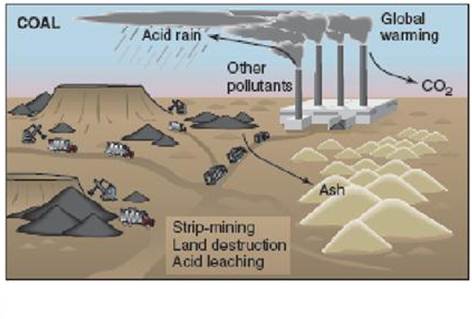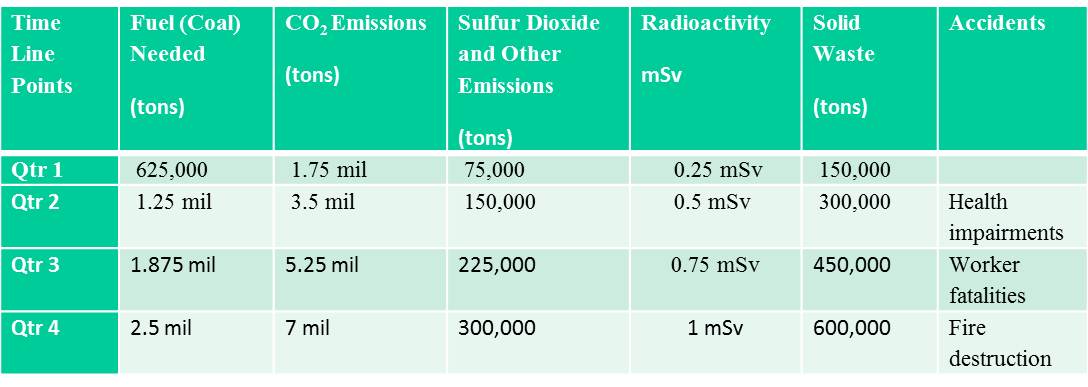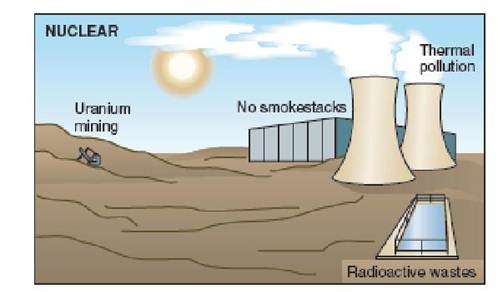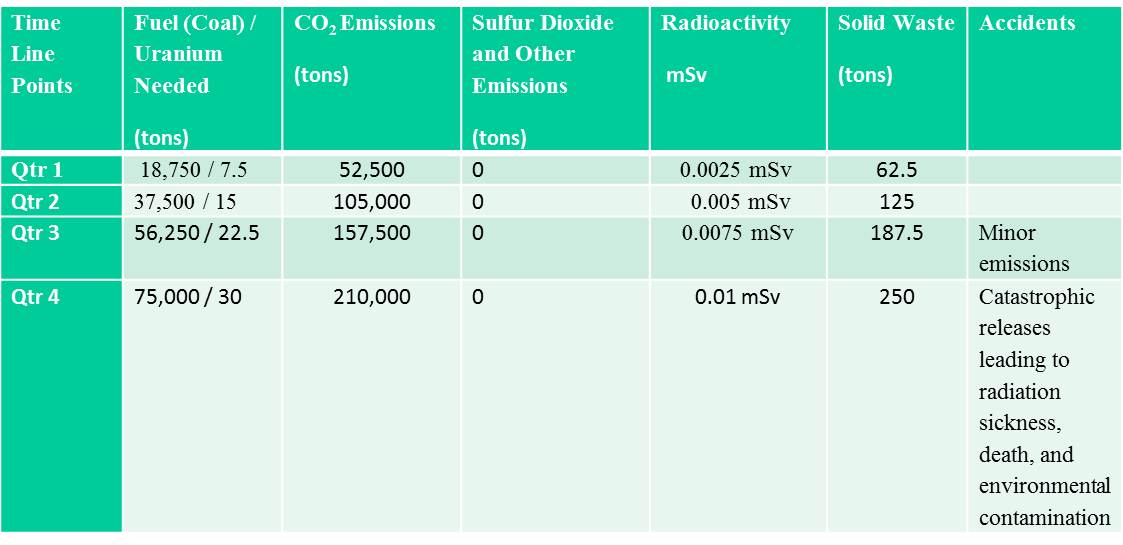In this lab, you will see the time progression of impacts associated
Introduction
There are many perceived concerns with using nuclear energy as a primary energy source to generate electricity. Possibly, when you think of nuclear energy, one of the main thoughts that might pop into your heads is unstoppable destruction. If you link that thought along with the high costs of building nuclear power plants and the difficulties in radiation waste management, the hesitation about using nuclear energy as a resource for electricity production is understandable. However, with no definitive reliable and renewable energy sources being used in the world, what are your choices when you consider the needs for human sustainability? Fossil fuels, despite their description as being nonrenewable and an important source of pollution, still provide the world with about two thirds of its electricity, with the fossil fuel coal making up the greatest contribution.
Below you will see two graphic that represent the addition of coal or uranium that is mined as a fuel source for either a coal-fired or nuclear power plant, respectively. A data table will be displayed below each graphic to quantify pollutants associated with coal-fired and nuclear power plants. Use this information to complete your lab worksheet and help you accept or reject your hypothesis.
Coal Plant

Coal Plant Pollutants

Note on Radioactivity: A coal plant releases 100 times more radioactivity than a nuclear power plant because of the natural presence of radioactive compounds (uranium, thorium) in the coal. Millisievert (mSv) is a high-level radiation unit, and 1 mSv = 1/1,000 of a sievert. This is used to express the level of radiation exposure, which indicated an individual’s increased risk of developing cancer.
Nuclear Plant

Nuclear Plant Pollutants

Note on Radioactivity: A coal plant releases 100 times more radioactivity than a nuclear power plant because of the natural presence of radioactive compounds (uranium, thorium) in the coal. Millisievert (mSv) is a high-level radiation unit, and 1 mSv = 1/1,000 of a sievert. This is used to express the level of radiation exposure, which indicated an individual’s increased risk of developing cancer.
Reference
Nebel, B.J., & Wright, R. T. (2008). Environmental science: Toward a sustainable future. (9th ed.). Upper Saddle River, NJ: Prentice Hall.


